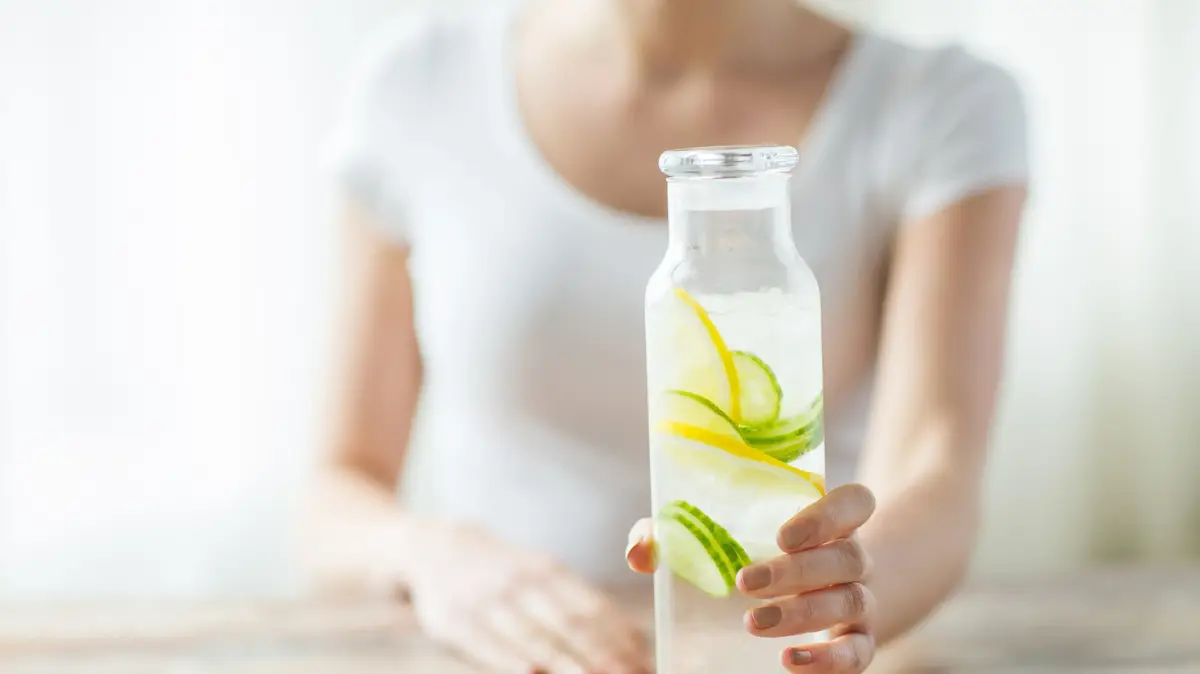Dry January obliges, you see with a new eye - more sober - the occasions when one toasts as much as one twerks.
Dinners, drinks at the end of the day to decompress, evenings of anthology... You realize that it is very easy to consume alcohol regularly.
So how do you achieve the famous moderation?
How to correctly analyze your alcohol consumption?
What
"red flags"
should alert and how to prevent problematic consumption?
Mickael Naassila (1), president of the French Society of Alcoholism, and neurobiologist of alcohol addiction at Inserm, gives the keys to better identify.
On video, alcohol and pregnancy: disentangling the true from the false
Beware of doses at home
According to the 2020 Public Health France barometer, 23.7% of the population aged 18 to 75 exceed the threshold currently recommended by the health authorities: 10 glasses per week, 2 glasses per day maximum and not every day.
But concretely, what volume and what liquid are we talking about?
In practice, each beer, wine or spirit contains a different volume of pure alcohol (ethanol) per 100 ml of drink.
The latter is indicated in degrees on the label of the bottle.
And the higher the degree, the more the drink is concentrated in ethanol.
Read alsoA drink after work and before the children, when can we talk about excess?
“The sanitary recommendations are based on the standard drink served at the bar or restaurant.
It contains a quantity of pure alcohol of 10 grams”, informs Mickael Naassila.
But pay attention to the doses consumed: for the same quantity of pure alcohol, the volume differs according to the drink (beer, wine, whisky, etc.).
Thus, half a beer (25 cl) at 5°C is equivalent to a balloon of wine (10 cl) at 12°C, a glass of champagne (10 cl) at 12°C and a glass of whiskey (2. 5 cl) at 40°C.
Outside of bars and restaurants, we are not always aware of these measures, and we can very quickly exceed the recommended limit.
“A strong beer bought in the supermarket, such as a 50 cl can of 8.6°C, actually corresponds to three half beers, i.e. one glass too many compared to the recommendations in force.
Same thing when serving wine at the table;
people generally have heavier hands,” observes the president of the French Society of Alcoholism.
On this point, the specialist favors the use of the measuring cup to respect the bartender's dosages mentioned above.
For cocktails or other drinks with a different degree of alcohol, you can easily find calculators online.
Pay attention to your consumption on weekends
Some of us skip the booze on weekdays, preferring to enjoy a bottle of Bordeaux with friends on the weekends.
If the initiative is commendable, be careful not to catch up with your weekly quota in the space of an evening.
The limit of two daily drinks still holds, even during the weekend.
Especially since significant occasional alcohol consumption, more commonly known as
binge-drinking
, remains a consumption that is more harmful to the body, indicates Mickael Naassila.
“From 6 to 7 glasses, we will violently attack his liver and his brain, which can trigger harmful inflammatory processes, specifies the specialist.
And if this
binge-drinking
is repeated more than twice a month, it multiplies by 3 the risk of becoming alcohol-dependent.
From 6 to 7 glasses, we will violently attack his liver and his brain
Mickael Naassila, professor of physiology at the University of Picardie and neurobiologist of alcohol addiction at Inserm
As a reminder, the consumption of alcohol is never without danger, whatever the quantity consumed.
At the beginning of January, the World Health Organization reminded us: "Alcohol is a toxic, psychoactive substance which induces dependence and was classified in group 1 of carcinogens by the International Agency for Research on Cancer about ten years old.
Alcohol causes at least seven types of cancer, the most common of which are bowel cancer and breast cancer in women.
Without forgetting that “any alcohol consumption is also associated with an increased risk of cardiovascular and digestive pathologies”, adds Mickael Naassila.
Harmful reasons for consumption
When ordering at the bar, or when our host invites us to hold out our glass, it may be wise to question his motivation for refilling.
According to data from the Public Health France 2017 barometer, nearly one in two French people think that offering alcohol or drinking it “is part of the rules of good manners”.
A false and harmful received idea, deplores the president of the French Society of Alcoholism.
According to him, it is urgent to move away from this ritualization and harmful consumption patterns.
“If I had a hard time refusing a drink, if I consume alcohol and increase the quantities to seek intoxication, a sedative effect and/or to socialize more, this should alert us and invite us to moderate us", sums up the president of the French Society of
If
binge-drinking
is repeated more than twice a month, this multiplies by 3 the risk of becoming alcohol-dependent
Mickael Naassila
Monitor the effects on the body and listen to yourself
Disappointing tomorrows, in other words “hangovers”, are also a signal of potentially problematic consumption.
If you wake up with headaches, nausea, and feeling very unwell, chances are you've had one drink too many.
Alcohol sensitivity varies from person to person and in some situations, it is not necessary to exceed the authorized limit to feel bad the next day, informs Mickael Naassila.
In some individuals, the effects can be felt in the following days and disrupt their daily lives.
“Sleep helps consolidate memory, but alcohol weakens its structure, confirms the specialist.
As a result, we sleep and recover less well.
And this affects our cognitive functions during the day, we have difficulty paying attention, concentrating.
The more we drink, the more we will measure these consequences in the long term”.
A single watchword therefore: listen to each other.
(1) Mickael Naassila is also professor of physiology at the University of Picardie Jules Verne.
In video,
Alcohol for women
, excerpt from Michelle's testimony


/cloudfront-eu-central-1.images.arcpublishing.com/prisa/GDIPSQV5DRBALCE5I2EXC47C5M.jpg)












